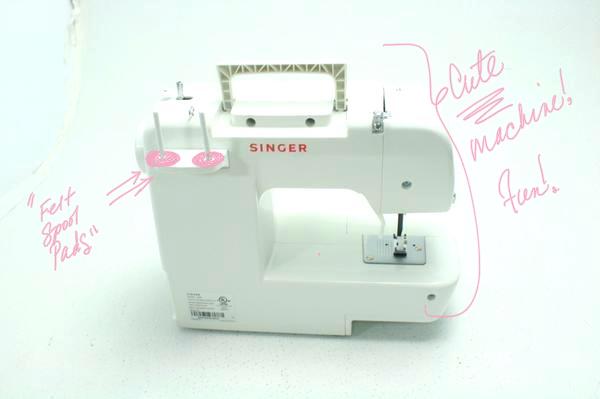Dear Fellow Sewist @Marium,
You are so correct to be outraged at the overvalued price of those “Spool Pin Felt Pads” for sale on Amazon, that is outrageous, you could buy a whole yard of felt for that price! Which would make a couple hundred spool pads... And your’s is a good question, how necessary are they? This is an great example of sinister marketing, an attempt at propagandizing someone who is newish to an area of expertise into believing that their “very special product” is magically necessary to your success. Good for you for questioning The Man!
What you intuitively know, is that their function is simply to provide just the right amount of friction or resistance between the spool bracket and the spool itself. Then as you are sewing along, and slow down or stop, your spool doesn’t continue to spin, getting ahead of the amount of pull placed on the thread as you make stitches, thus letting uncontrolled thread come unwound. This unwound loose thread could not only get tangled upon itself or caught on something, and cause a sudden bind-up, but also is not going to be under proper tension when you resume sewing, thus potentially creating poorly constructed stitches (which equates to a weak and unsightly seam). In other words, the spool pad is there to keep the spinning action of the spool under control as the sewist starts, changes speeds, and stops.
Any somewhat thick, non-slippery fabric you have laying around could do the job of replacing the wayward original felt pad. Felt is nice, but you could also cut a spool-sized circle with a little hole in the middle from denim, wool, synthetic fleece, or even a knit fabric, such as from a mismated sock or an old sweatshirt.
Are spool pads absolutely necessary? I have forgotten them at times, and sewed successfully for awhile with no problems, then had a bind-up due to tangled thread and realized it all started with my spool spinning out of control. Usually this occurs when I am sewing very fast; I sometimes sew like I sometimes drive, “too fast for road conditions”. So for me spool pads are a good thing for keeping my spools under control. (Or maybe I should let them spin as reminders for me to slow down? Sewing too fast is not good...)
Anyway, if you are a slow steady sewist, you may never have an out-of-control spool, and it may not therefore be “absolutely necessary”. But it is probably a healthy practice to get in the habit of... Perhaps these simple lowly spool pads control slight variations in spool spin which affect the seam quality in ways we cannot readily see?
As far as control of the spool’s rattling noise, yes it works for that too...
(I should clarify that I am assuming you are asking about the pad that rests on the spool spindle on the top of your machine, rather than the bobbin which holds the bottom thread.)
